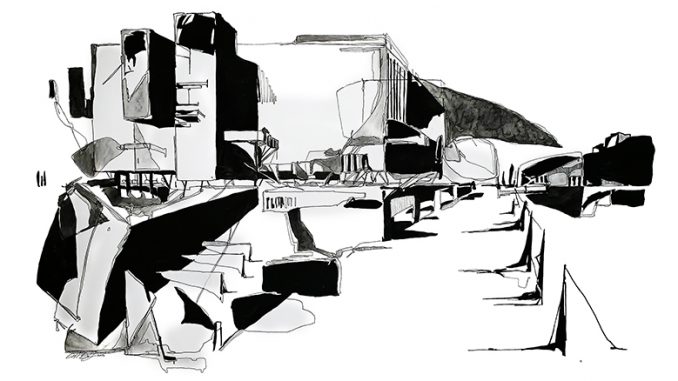
The Privilege of Learning from Failure
I had a simple premise for a book:
- People learn the most when they fail
- People fail the most when they play games
- Therefore, games are the best way for people to learn
There was plenty of research to back this up. But even better than case studies, I had quotes—everyone from Einstein to Edison who all confirmed that failure was the greatest teacher. One such quote came from the late Randy Pausch, who said:
“The brick walls are there for a reason. The brick walls are not there to keep us out. The brick walls are there to give us a chance to show how badly we want something. Because the brick walls are there to stop the people who don’t want it badly enough. They’re there to stop the other people.”
Pausch’s quote seemed especially fitting when discussing failure as a core mechanic of game-based learning. My audience of trainers, teachers, and instructional designers were often building games that literally had players jumping over walls. What better way to summarize the opportunities that failure provides?
I called my book Fail to Learn. But I failed my readers by treating trial-and-error like an impartial design tool. I ignored the fact that real-world failure is disproportionately weighted to punish and oppress people different than me.

THE LOSING TEAM
Here’s a case study that didn’t make it into the book:
Researchers from Utah State University explored the hiring patterns of Men’s Basketball coaches in the National Collegiate Athletic Association (NCAA). Using data from over a 30-year period, they found that minority coaches were much more likely than white coaches to be hired on to teams with losing records. The researchers found a similar discrepancy in the hiring practices of struggling Fortune 500 companies. Companies experiencing hardship were much more likely to hire women and minority CEOs (Cook and Glass, 2013).
I couldn’t find a way to add this to my book on game-based learning, but the story stuck with me. Why would a struggling organization or sports team suddenly be more likely to promote women and minorities?
Some people suggested that white men simply had more privilege and power to decline “risky” offers like these. Others wondered if failing organizations were consciously or subconsciously trying to signal a change in direction by bringing on a “nontraditional” (read: non-white, non-male) leader.
Regardless, these problematic practices gave rise to a new term: the “glass cliff.”
Whereas the “glass ceiling” describes a barrier that keeps oppressed groups from reaching the top of an organization, the glass cliff is the precarious spot those groups can find themselves in when they are given top positions, but only when there is increased risk and likelihood of failure.
The coaches from this study face an impossible, “double jeopardy” situation, as one researcher describes. “Not only are they more likely to be placed in struggling teams, but they’re not given enough time to prove themselves, so in some ways that risks confirmation bias that black coaches aren’t as good” (Munson, 2013).
But that’s not where the bias stops.

THE DISPARITY OF FAILURE
“We are all failures—at least the best of us are,” said J.M. Barrie.
“Only those who dare to fail greatly can ever achieve greatly,” said Robert Kennedy.
“The difference between average people and achieving people is their perception of and response to failure,” said John C. Maxwell.
All successful individuals. All white men.
There’s a problem with how our society views failure, and it’s a problem in which I, too, am complicit. When we treat failure as an impartial tool, as I did in my research, we ignore the disproportionate consequences even the smallest failure can bring to oppressed groups. When we tell people to “fail fast and cheap,” we cheapen their lived experiences, and we further the misconception that everyone who makes the same mistake will suffer the same amount.
Yes, failure can be a great teacher. But in order for that to be true for everyone, we must do more than regurgitate the aphorisms of famous white men. Game environments and learning environments can be amazing places where students may experience leveled playing fields the likes of which will never exist in the real world. But we let down our learners and ourselves if we don’t recognize the uneven terrain of reality each student is returning to.
There are many action steps we can and must take from here, but perhaps the most fundamental is to think more critically the next time we see a famous “learn from failure” quote. From now on, when we talk about climbing over the walls that are “there to stop the other people,” let’s make sure we aren’t adding more bricks to the top.
Fail to Learn: A Manifesto for Training Gamification is available from Amazon
References and further reading:
Burrows, W., 2013. Trench. (Gauche on Bristol board). www.iwilldraw.com
Burrows, W., 2015. Bridge. (Digital drawing).
Burrows, W., 2015. Cantilever. (Digital drawing).
Cook, A. and Glass, C., 2013. Glass Cliffs and Organizational Saviors: Barriers to Minority Leadership in Work Organizations?. Social Problems, 60(2), pp.168-187.
Cook, A. and Glass, C., 2013. Women and Top Leadership Positions: Towards an Institutional Analysis. Gender, Work & Organization, 21(1), pp.91-103.
Munson, K., 2013. Studies Show Women & Minority Leaders Have Shorter Tenures, Tenuous Support. [online] Utah State University TODAY. Available at: <https://www.usu.edu/today/story/studies-show-women-amp-minority-leaders-have-shorter-tenures-tenuous-support> [Accessed 6 August 2020].
- Die Trying – Learning through Failure in Games - 13th January 2022
- Glass Cliffs and Brick Walls - 9th August 2020





Great point.
It started me off on a train of thought related to a game I used to play with friends based on Alanis Morissette’s ‘ironic’: the game was to see what you would need to change about the lines of the song to make them actually ironic (as opposed to just unlucky coincidences), e.g.:
‘it’s like ten thousand spoons when all you need is a knife…’
‘…despite the fact that you specifically chose who to order ten thousand pieces of cutlery from based on their reliability at delivering exactly what was ordered.’ [which doesn’t scan as well, to be fair…]
So the application here is, how could you adjust the aphorisms to make them more broadly true…
‘The brick walls are there to stop the people who don’t want it enough…’
‘…as well as the people who have so little bandwidth left after fighting discrimination every day that they don’t have room to fail multiple times’
‘…as well as those whose first failure was punished in a way the mistakes of the privileged never are’
…etc.
Terry, I can’t tell you how much I love your comment. You’ve captured so clearly the root of these “incomplete” aphorisms, and what we need to do to adjust them both internally and when talking to others.
…And that “Ironic” game sounds like great fun!
I really like this. There is the basis for a deeply reflective empathy-based game right here. “In what ways can you imagine the brick wall stopping x person, even when they do ‘want it enough’?”
This got me thinking about Baratunde Thurstons Ted talk where he explores the phenomenon of white Americans calling the police on black Americans who have committed the crimes of … eating, walking or generally “living while black.” He reveals the power of language to change stories of trauma into stories of healing — while challenging us all to level up. https://www.ted.com/talks/baratunde_thurston_how_to_deconstruct_racism_one_headline_at_a_time?language=en
This is amazing. Thank you for the link, Simon!
This is amazing. Thank you for the link, Simon!